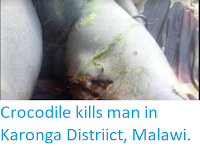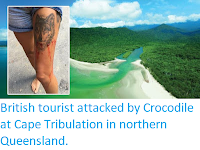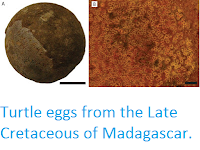Aspontaneous preference to orient toward faces and face-like configurations (three blobs arranged as an upside-down triangle inside an ellipse) has been observed at the beginning of life in Human neonates and fetuses. To date, this spontaneous preference has been investigated only in social species that rely on early parental care. Hence, a possibility is that the preference for facelike stimuli is an adaptation of social species for orienting toward the conspecifics and sustaining parental care. Alternatively, the preference for face-like stimuli might be a behavioral mechanism used to attend to living beings, or just a by-product of the architecture of the visual system. Only if these alternative hypotheses are correct would one expect solitary species without parental care to show a preference for face-like stimuli at birth. To clarify whether the preference for face-like stimuli depends on parental care, evidence from taxa with no parental care is needed. Land Tortoises are a convenient model system to investigate this issue because they can be tested soon after hatching and are solitary: Tortoises of the Testudo genus have no posthatching parental care, indicating that, for at least 30 million years, they have evolved with no parental care, they do not aggregate or form cohesive social groups, and hatchlings tend to ignore or avoid conspecifics, showing that, from the beginning of life, they are not gregarious. If the preference for face-like stimuli evolved as a behavioral mechanism to enhance parental care or interactions with conspecifics, Tortoise hatchlings should not show this preference.
In a paper punlished in the Procedings of the National Academy of Sciences of the United States of America on 29 September 2020, Elisabetta Versace of the Department of Biological and Experimental Psychology at Queen Mary University of London, and of the Center for Mind/Brain Sciences at the University of Trento, Silvia Damini, also of the Center for Mind/Brain Sciences at the University of Trento, and Gionata Stancher, once again of the Center for Mind/Brain Sciences at the University of Trento, and of the Fondazione Museo Civico Rovereto, present the results of a series of experiments which sought to test this hypothesis.
Versace et al. measured the first approach responses of naïve Tortoise hatchlings of the genus Testudo to face-like stimuli vs. different control stimuli previously used in other studies. The first approach is not influenced by experience and is not affected by individual and species differences in speed. To parallel previous studies, Versace et al. used different alternative stimuli: upside-down face-like stimuli to test a preference for the orientation of the configuration, top-heavy stimuli to test the preference for a heavier part of the item in the absence of a triangular configuration, and asymmetrical stimuli to test the preference for the bilateral symmetry of the face-like stimulus. Because the previous experiments indicated a preference for face-like stimuli vs. upside-down and asymmetrical stimuli but not vs. top-heavy stimuli, Versace et al. ran an experiment to clarify whether vertical patterns elicit a preference over horizontal patterns and an experiment with a squared/noncongruent configuration vs. a scrambled/congruent configuration congruent with the horizontal orientation of the contour.
In the face-like vs. upside-down experiment, Versace et al. observed a significant preference for the face-like stimuli: 70%; in the face-like vs. asymmetrical experiment, Versace et al. observed a significant preference for the face-like stimulus: 74%; in the face-like vs. top-heavy experiment, Versace et al. observed no significant preference for the face-like stimulus: 56%. The last two experiments suggest that the preference might be sustained by top-heavy patterns, with blobs congruent to the contour orientation. In fact, we observed a significant preference for the vertical vs. horizontal stimulus (68%) and for the scrambled/congruent vs. squared/noncongruent stimulus (66%).
Versace et al. tested whether the spontaneous attraction for face-like stimuli found in social species with parental care, such as Human beings, Monkeys, and domestic Chicks, is present also in land Tortoises, that are solitary animals with no parental care. Surprisingly, naïve Tortoise hatchlings exhibited a preference for face-like configurations too. Versace et al. show that the preference for face-like stimuli is present in solitary species at the beginning of life. These results suggest that the predisposition to orient toward faces/face-like stimuli is not an adaptation for parental care or for sustaining engagement with conspecifics. Then, what is the functional value of this trait, if any? A possibility is that Tortoises are attracted to cues associated with living Animals, such as face-like stimuli, because living Animals provide relevant information, such as the availability of resources. Predispositions might be mechanisms to enhance the acquisition of information from other Animals. Indirect evidence for this explanation comes from the fact that Tortoise hatchlings initially explore unfamiliar individuals before actively moving away from them. Another possibility is that this predisposition has no functional adaptive value but derives from a sensitivity of the visual system to top-heavy patterns congruent with the orientation of the bounded area delimiting the features. Although this explanation is in line with the preference for patterns congruent with the contour, it does not account for the face-like vs. upsidedown preference. Briefly, Versace et al. showed that Tortoise hatchlings can discriminate between different configurations of blobs and that the preference for face-like stimuli is not limited to Mammals and Birds but extends to Reptiles. This suggests the presence of an ancient mechanism for orienting toward face-like patterns, evolved in the common ancestors of Mammals, Reptiles, and Birds more than 300 million years ago, possibly from a bias toward top-heavy, symmetrical stimuli congruent with the orientation of the outline. Versace et al.'s research calls for further studies to test the hypothesis that predispositions present at the beginning of life are mechanisms that enhance exploration and learning in both solitary and social species.
See also...



Follow Sciency Thoughts on Facebook.
Follow Sciency Thoughts on Twitter.
























